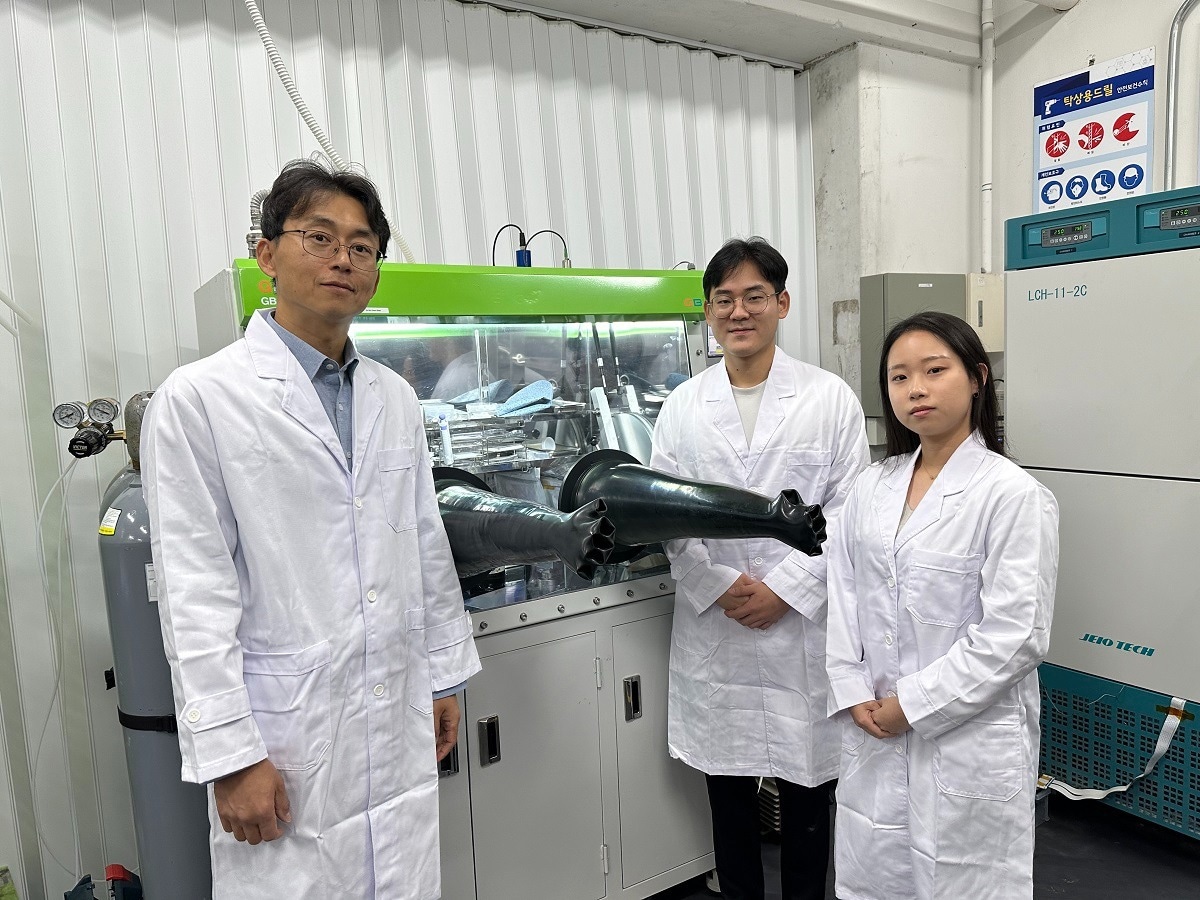Reviewed by Lexie CornerNov 27 2024
Professor Seong Su Kim’s group from the Department of Mechanical Engineering (KAIST) has developed a thin, uniform, high-density structural carbon fiber composite battery. This multifunctional battery supports mechanical loads, has a high energy density, and minimizes fire hazards. The findings were published in ACS Applied Materials & Interfaces.
 (From left) Professor Seong Su Kim, Ph.D. candidates Sangyoon Bae and Su Hyun Lim of the Department of Mechanical Engineering. Image Credit: Korea Advanced Institute of Science & Technology
(From left) Professor Seong Su Kim, Ph.D. candidates Sangyoon Bae and Su Hyun Lim of the Department of Mechanical Engineering. Image Credit: Korea Advanced Institute of Science & Technology
Structural batteries are used in industries such as eco-friendly energy-based vehicles, mobility, and aerospace, where they must meet two key requirements: high energy density for energy storage and high load-bearing capability. Conventional structural battery technology has faced challenges in improving both functions simultaneously. However, KAIST researchers have successfully developed basic technologies to address this issue.
Early structural batteries involved integrating commercial lithium-ion batteries into layered composite materials. These batteries had poor integration of mechanical and electrochemical properties, leading to problems with material production, assembly, and design optimization, making commercialization difficult.
To address these challenges, Professor Kim’s team explored the concept of “energy-storing composite materials,” focusing on interface and curing properties that are critical in traditional composite design. This approach led to the creation of high-density multifunctional structural carbon fiber composite batteries that maximize functionality.
The researchers examined the curing mechanisms of epoxy resin, known for its high mechanical strength when mixed with ionic liquid and carbonate electrolyte-based solid polymer electrolytes. They improved the curing process by adjusting temperature and pressure.
The newly designed structural battery was produced using vacuum compression molding, which increased the volume fraction of carbon fibers—used as both electrodes and current collectors—by more than 160 % compared to earlier carbon-fiber-based batteries.
This increased the contact area between the electrodes and electrolytes, resulting in a high-density structure with improved electrochemical performance. Additionally, the researchers successfully regulated air bubbles during the curing process, enhancing the battery's mechanical properties.
We proposed a framework for designing solid polymer electrolytes, a core material for high-stiffness, ultra-thin structural batteries, from both material and structural perspectives. These material-based structural batteries can serve as internal components in cars, drones, airplanes, and robots, significantly extending their operating time with a single charge. This represents a foundational technology for next-generation multifunctional energy storage applications.
Seong Su Kim, Study Lead Researcher and Professor, Korea Advanced Institute of Science & Technology
Mohamad A. Raja, a master’s graduate from KAIST's Department of Mechanical Engineering, was the first author of this study.
National Research Foundation of Korea’s Mid-Career Researcher Program and the National Semiconductor Research Laboratory Development Program supported the study.
Journal Reference:
Raja, M. A. et. al. (2024) Thin, Uniform, and Highly Packed Multifunctional Structural Carbon Fiber Composite Battery Lamina Informed by Solid Polymer Electrolyte Cure Kinetics. ACS Applied Materials & Interfaces. doi.org/10.1021/acsami.4c08698